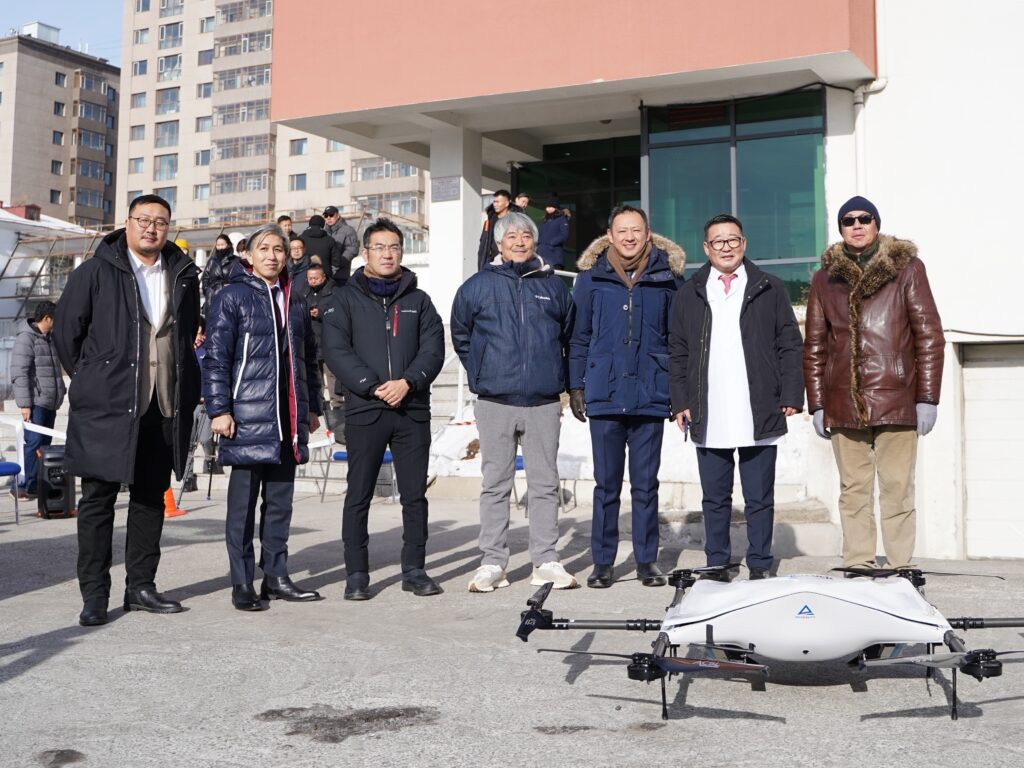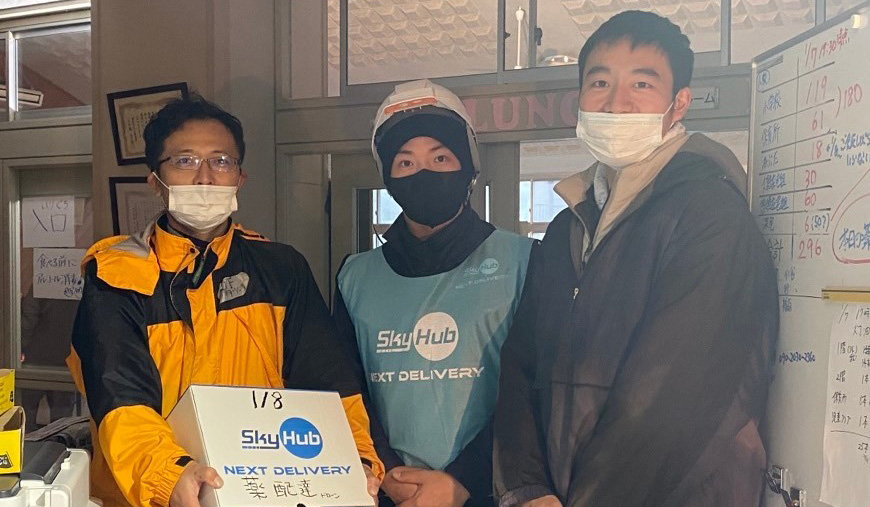

Achievements/case studies
Blood Transportation in Ulaanbaatar, Mongolia

Drone Blood Transport between Blood Transfusion Center and Hospitals in Ulaanbaatar, Mongolia, Aiming to Establish a Regular Medical Delivery Network
Aeronext Inc., in cooperation with Newcom Group, Seino Holdings Co., Ltd. and KDDI SmartDrone Inc. conducted a demonstration experiment of blood transportation by drone in Ulaanbaatar, Mongolia, on a 9.5 km route between the National Center for Transfusion Medicine and the Mongolia-Japan Hospital of Mongol National University of Medical Science. The experiment was conducted in Ulaanbaatar, Mongolia (November 2023). The experiment was conducted at an altitude of 1,300 m above sea level and in extremely cold conditions with an outside temperature of -15°C. It was a successful flight, equivalent to “Level 4” (unassisted visual flight in a manned area) in Japan.
This demonstration test was conducted with the support of the Mongolian Civil Aviation Authority (MCAA), the City of Ulaanbaatar, the Land Survey and Mapping Agency, and the Meteorological and Environmental Research Agency, and was based on thorough preparation and field surveys by Aeronext’s flight operation engineering team, resulting in Mongolia’s first official approval for a flight for transportation and delivery purposes. This is a socially significant attempt to find a solution in the medical field to the traffic congestion and road infrastructure problems in Ulaanbaatar.
In addition, this demonstration experiment is the first step in the activities of the Mongolia New Smart Logistics Promotion Working Group to explore the possibility of building a drone-based delivery network and the societal implementation of drone delivery in Mongolia.

Demonstration Experiment Overview
Background
Half of Mongolia’s total population (approximately 1.6 million) is concentrated in the city of Ulaanbaatar. In terms of logistics and transportation, chronic traffic congestion and inadequate road infrastructure have had a negative impact on economic activities as well as medical care. Air pollution is also increasing due to localized use of gasoline-powered vehicles in the urban center.
On the other hand, the demand for individual delivery is increasing due to the rise in income levels and the increase in the number of e-commerce users as a result of the improvement of the IT and telecommunications environment. Therefore, in order to contribute to the improvement of the urban living environment, including medical services, the “Mongolia New Smart Logistics Symposium 2023” was held in September this year, aiming to realize the creation of a logistics infrastructure that is highly sustainable in terms of immediacy, economy, and environment through the use of air transportation.
This verification experiment is the first step in the activities of the Working Group, with a view to future societal implementation of drone delivery networks in the medical field.
Purpose
In the medical field, the almost daily transportation of blood for transfusion from the National Blood Transfusion Center, the only blood transfusion center in Mongolia, to various hospitals by car is a long and inefficient process, requiring the accompaniment of nurses and amid chronic traffic congestion. Further, when transporting goods, which require immediacy and urgency, the goods are transported by ambulance, but the arrival time is not only unpredictable due to traffic congestion, but also leads to lost opportunities for patient transport, which is the original demand for ambulance vehicles, of which there are only a limited number.
If a regular drone route between the Blood Transfusion Center and hospitals or between hospitals can be established, it will be possible to transport goods quickly and efficiently without being affected by traffic congestion, which will improve the working environment for nurses and the sustainability and quality of medical care. The drone flight from the National Blood Transfusion Center to the Mongolian-Japanese Hospital of MNUMS will be tested and verified as the first part of a regular route.
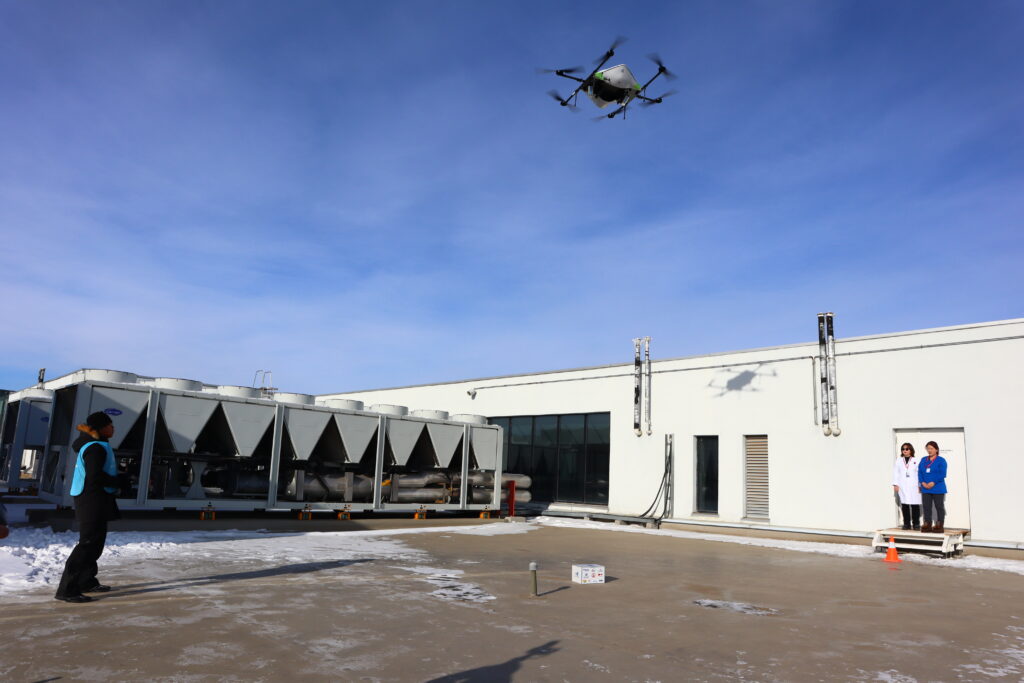
Details of the Demonstration Experimen
The drone delivery involved a round-trip flight of approximately 9.5 km in total, covering a distance of 4.75 km one way between the National Blood Transfusion Center in Ulaanbaatar and the Mongolian-Japanese Hospital of MNUMS, to deliver blood for transfusion.
The aircraft is AirTruck, a logistics-specific drone with a maximum payload of 5 kg and a maximum flight distance of 20 km, which was jointly developed by Aeronext and ACSL Ltd. from scratch specifically for logistics applications. Mobicom communications will be used for communication, and the aircraft will be controlled by the operation management system, which enables remote control and autonomous flight of the aircraft using mobile communications. And a drone operation overseas has been “remotely monitored” from Japan.
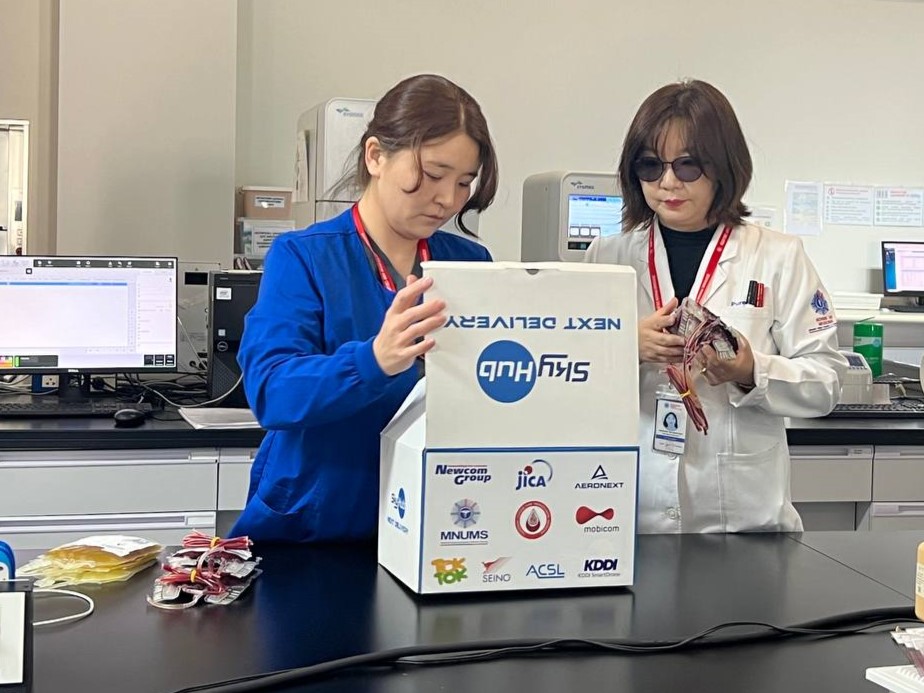
In the delivery process, nurses at the National Blood Transfusion Center store 11 packs of 3 different types of blood and medical fluid packs, weighing approximately 2.3 kg, in a special AirTruck box with temperature-controlled packaging based on Seino HD’s know-how, set the box in the AirTruck, and the AirTruck takes off from the parking lot of the National Blood Transfusion Center. It flew automatically as pre-programmed for a distance of 4.75 km one way, and after about 13 minutes landed on the roof of the Mongolian-Japanese Hospital of MNUMS, where it off loaded and detached the specialized box, and returned to the parking lot of the National Blood Transfusion Center from where it took off after replacing the battery.
The delivered boxes were picked up by a nurse at the Mongolian-Japanese Hospital of MNUMS, who confirmed that the contents had arrived safely and temperature-controlled.
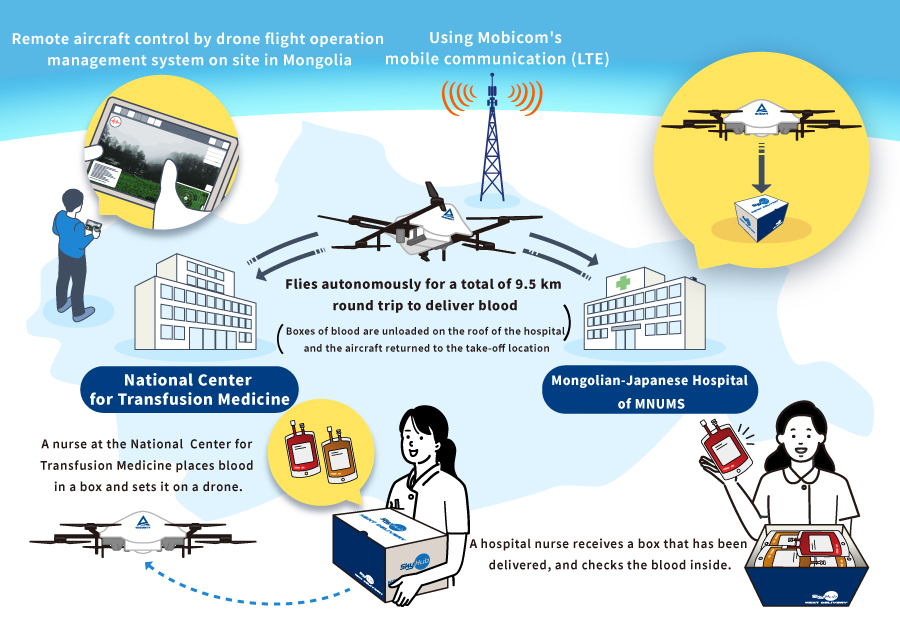
The four parties will continue to contribute to solving social issues in Mongolia through the activities of this working group, starting with the establishment of a regular medical delivery network using drones, and promoting the development of social infrastructure by building a new smart logistics SkyHub™ in line with social issues and the needs of Mongolian residents.
